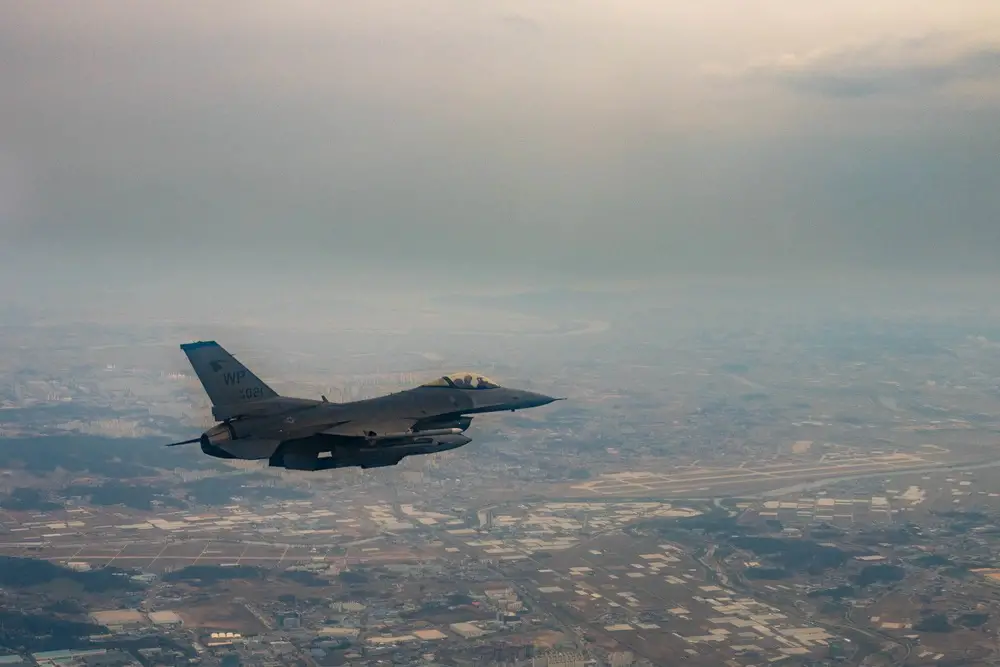After receiving the first phase of one of the largest modernization efforts in U.S. Air Force F-16 program history, an upgraded Fighting Falcon has rejoined the 8th Fighter Wing’s Pack, April 4, 2023. Wolf Pack Tail 021 has returned to 8 FW operations after about 7 weeks away for maintenance, where the Air Force Life Cycle Management Center’s Post Block Integration Team, or “PoBIT” project, provided the 1989 aircraft with the first wave of 22 modifications designed to improve F-16 lethality to meet the needs of current day and future operations. Piloting WP 021 for its first operational flight back with the Wolf Pack, Col. John D. Caldwell, 8 FW vice commander, experienced firsthand what the updated systems brought to the platform.
“The upgraded equipment I flew with today greatly improved my situational awareness, allowing me to receive and process information at a much faster rate than other F-16s in the past. The information was quick, reliable and presented on the new displays in a way that reduced my workload and improved effectiveness for all aspects of the flight. The F-16 is planned to continue service into the 2040’s, so this upgrade is critical to making sure we are keeping pace with the evolving threat environment. The main components that I interacted with today [the CDU and APG-83 SABR] are both critical pieces that work together to bring the F-16 closer to fifth generation capabilities, which will keep the F-16 relevant to the fight,” said Caldwell.

The main feature of the PoBIT upgrade is the installation of the APG-83 Scalable Agile Beam Radar (SABR) with active electronically scanned array and the Center Display Unit (CDU), technology that ultimately gives the F-16 and its pilot a clearer vision of the threat picture to increase both the survivability and accuracy of the weapon system. Other notable upgrades to the platform’s avionics from this round of PoBIT upgrades included a programmable data generator, new-generation electronic warfare capability, a communications suite upgrade and a modernized mission computer. The avionics upgrades allow pilots to take full advantage of the jet’s advanced weapons and sensors, it is capable of providing high speed data and/or high-resolution video and ultimately aids the pilot in tactical decision making.
These PoBIT upgrades play a large role in the future of F-16 support for Combatant Commanders across the area of operations. The survivability and lethality improvements these modifications provide factor into determining which conflicts the F-16 will participate in and in what capacity, which greatly expands our leaders’ options in contingency planning to support national security objectives. WP Tail 021 was the first 7th Air Force F-16 to return to flight operations with PoBIT upgrades and, as the rest of the fleet follows suit, the modernization effort will improve the USAF’s ability to safeguard a free and open Indo-Pacific region and the stability of the Korean Peninsula. PoBIT upgrades for the F-16 fleet are being conducted in various phases over the next couple of years to provide the aircraft the necessary updates while ensuring operational requirements can still be met.















